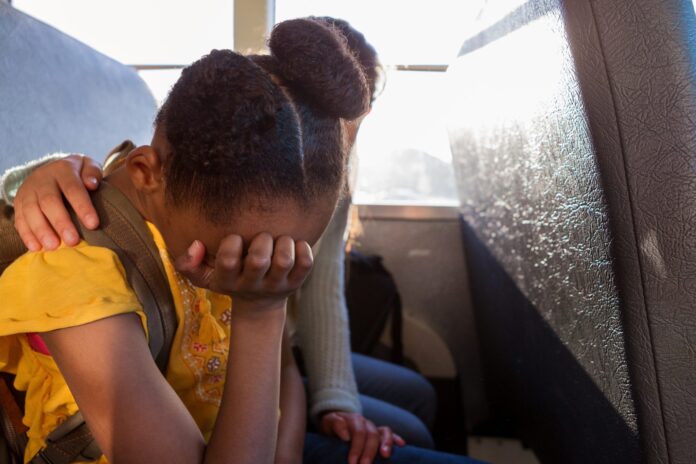Suicide resulting from bullying is a growing problem. Learn to recognize the warning signs and what parents and others can do.
Nationally, suicide is the second leading cause of death for youth and young adults between the ages of 10 and 24. In the past decade, headlines have been reporting more tragic stories of young people’s suicide deaths linked to every type of bullying—physical, verbal, and online (cyber).
Here are the facts:
- Nearly one in five students (21%) have reported being bullied during the school year. This means that more than 5 million young people are affected annually.
- Almost all forms of bullying peak in middle school. Sixth graders have reported the highest percentage of bullying (29%).
- Youth who had any involvement with bullying reported higher levels of suicide-related behaviors than those not involved in bullying.
- Approximately 34% of students have reported experiencing cyberbullying. Of those students, more than 60% reported that it affected their ability to learn and feel safe at school.
- Students who have experienced cyberbullying are two times more likely to attempt suicide.
- Thoughts of suicide and suicide attempts among youth have nearly doubled since 2008 and that has made suicide the second leading cause of death for individuals 10 to 34 years of age.
What are the warning signs?
Parents should look for warning signs of bullying. These include the following:
- Withdrawing from friends and family members
- Avoiding discussions related to activities on social media and phones
- Showing feelings of anger, anxiety or depression following use of the computer and suddenly stopping use of the computer
- Decreasing academic performance
- Avoiding or becoming upset about going to school and other activities
Parents should also look for warning signs of suicidal thoughts, which could include the following:
- New or more frequent thoughts of wanting to die
- Self-destructive behavior
- Signs of increased anxiety or panic, agitation, aggressiveness, impulsivity, insomnia or irritability
- New or more involuntary restlessness (akathisia), such as pacing or fidgeting
- New onset of unrealistic plans or goals
Can anything be done to prevent suicide because of bullying?
Preventing suicide because your child is being bullied can be challenging. The following are ways that parents or guardians can help:
- Consider telehealth (online) therapy or in-person therapy.
- Try to provide a home environment that is stable and safe (physically and emotionally). Parents should work to create a space where youth feel comfortable to talk about how they feel.
- Monitor social media use to check for cyberbullying and to make sure that young people are not watching videos about self-harm or suicide.
- Work to strengthen relationships and friendships with other youth and adults other than you.
- Acknowledge that bullying is painful and that your child’s feelings are justified and understandable. Do not dismiss being bullied as just part of growing up.
- Respond quickly in a crisis. If a child tells you that he or she is thinking about death or suicide, it is important to talk to them immediately. Don’t wait.
Ask questions to assess the immediate danger. Ask them if they have a suicide plan. Do they have what they need to carry out the plan? Do they know when they would do it? Do they intend to take their own life? These questions will help you assess if they have a plan that they will follow through on. - Offer help and support. Let them know that they are not alone, that you care about them, and that you are there whenever they need someone to talk to.
- Remember, don’t wait to talk. It might be too late.
How can other adults help?
Adults who work in youth-serving organizations and institutions can create a supportive and safe environment. Here are some ways that adults can accomplish this:
- Seek training to recognize the difference between bullying behavior and peer conflict.
- Establish a clear response when bullying happens.
- Talk to parents when you think something may be wrong.
- Respond consistently when bullying occurs and use free federal and nonfederal resources on bullying.
Adults can also offer social support:
- Listen.
- Help with problem-solving.
- Find community, religious and mental health support.
- Show that they care.
These behaviors may help youth to reduce depressive symptoms that could lead to suicide.
What are resources parents and youth can use?
The Centers for Disease Control and Prevention’s Strategic Direction for the Prevention of Suicidal Behavior recommends that parents promote social support, participation in activities, and connection with others to reduce social isolation.
Another resource for parents of youth who want to commit suicide is the National Suicide Prevention Lifeline at 1-800-273-TALK (8255). The Alabama Suicide Prevention and Resources Coalition has several resources that can be helpful to not only parents but also others in the community. Visit www.asparc.org/resources/community-resources.
Early adolescence is a critical period for supporting mental health and suicide prevention among young people. During these years, it is crucial for parents to support youth and give them the services they need. Talk to youth, especially during the middle school years, about their struggles and offer support when needed. Young people should know that there are concerned adults around them who can help if they struggle with thoughts of committing suicide.
In 2018, Alabama Governor Kay Ivey signed the Jamari Terrell Williams Student Harassment Act in response to a 10-year-old Montgomery boy who committed suicide because of bullying. The act puts responsibility on the board of education to make sure that cyberbullying and bullying are not tolerated on or off a school campus or online. This law gives schools more responsibility in disciplining bullies and stopping harassment before it leads to another tragedy. It also requires that each school system update the way it tracks and reports bullying cases. Parents should be aware that this law exists to hold schools accountable for the safety of their children.





















